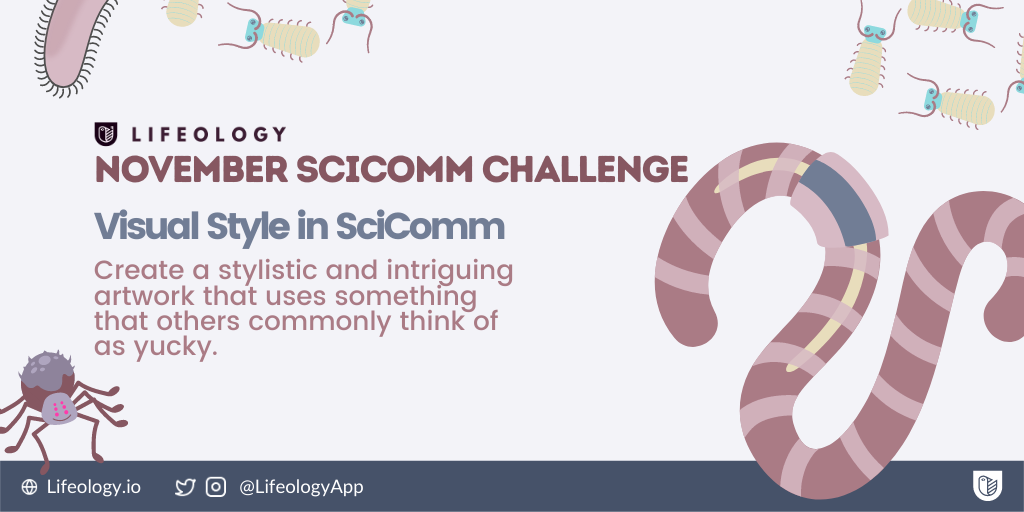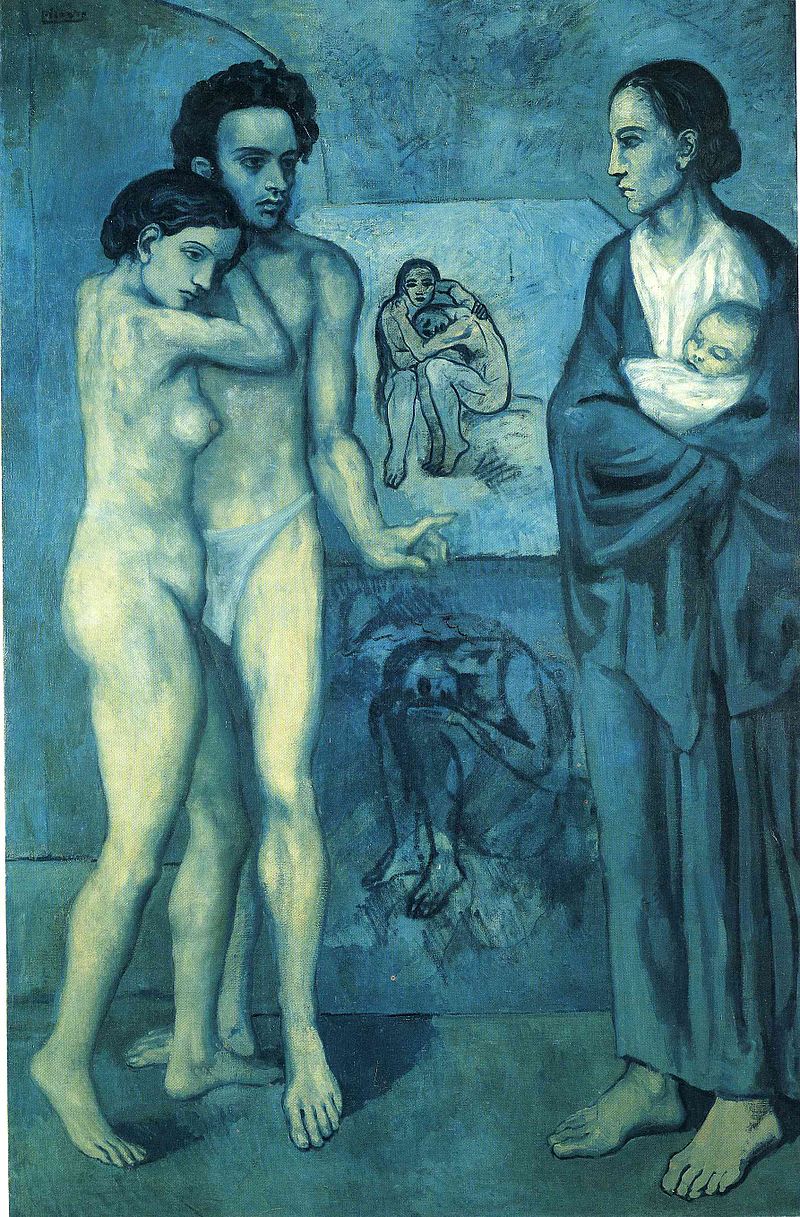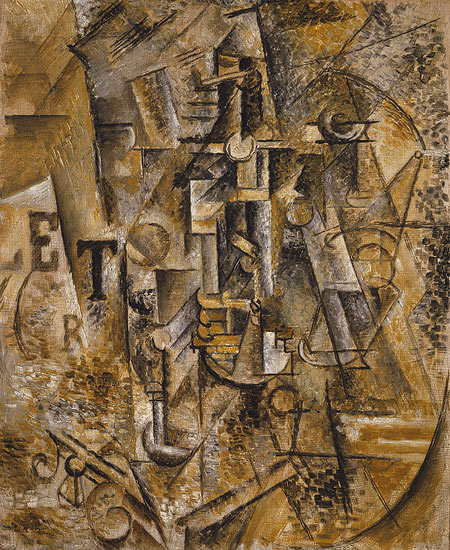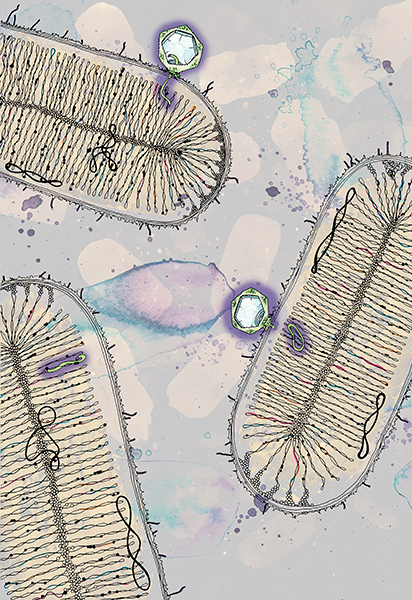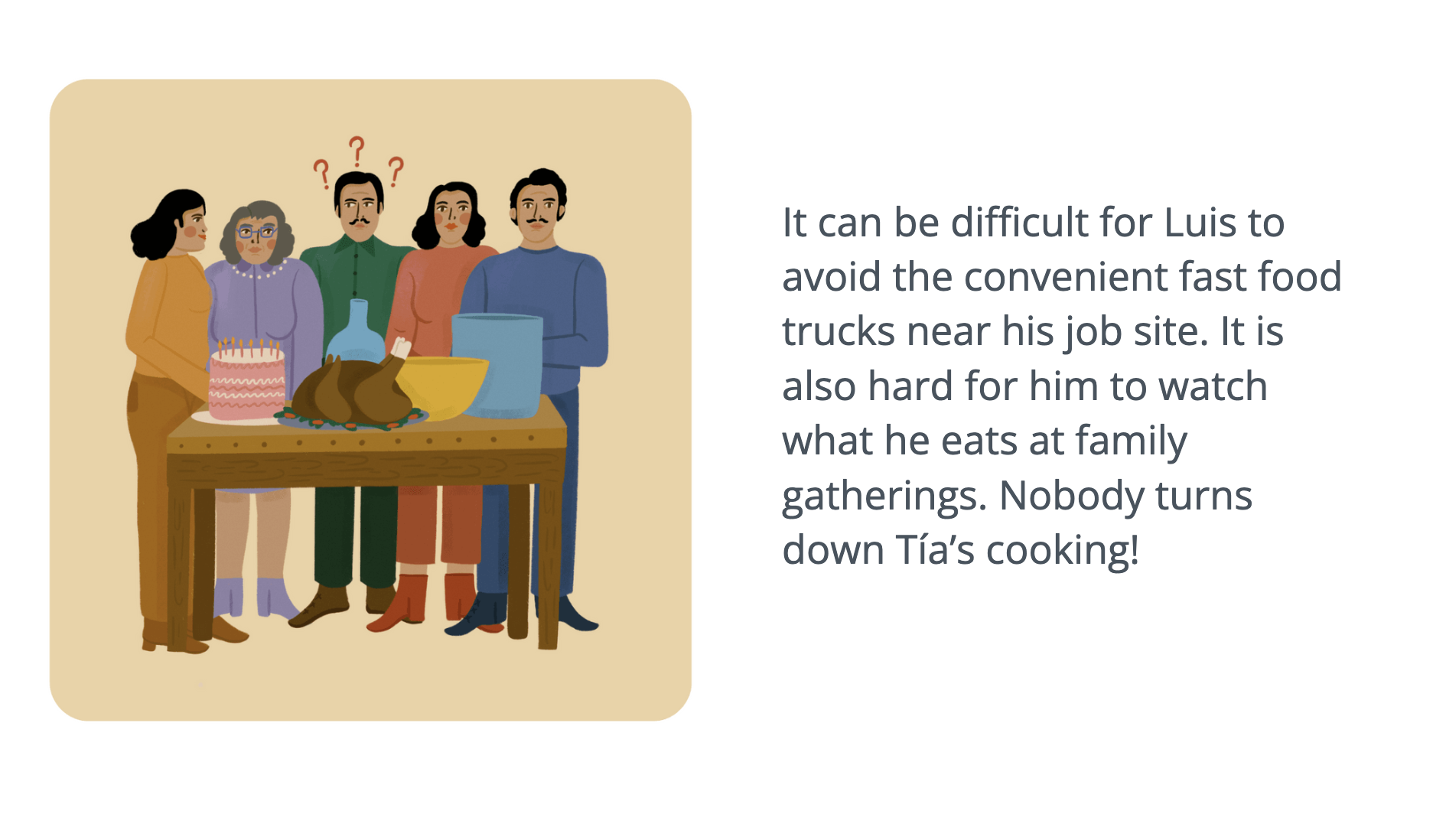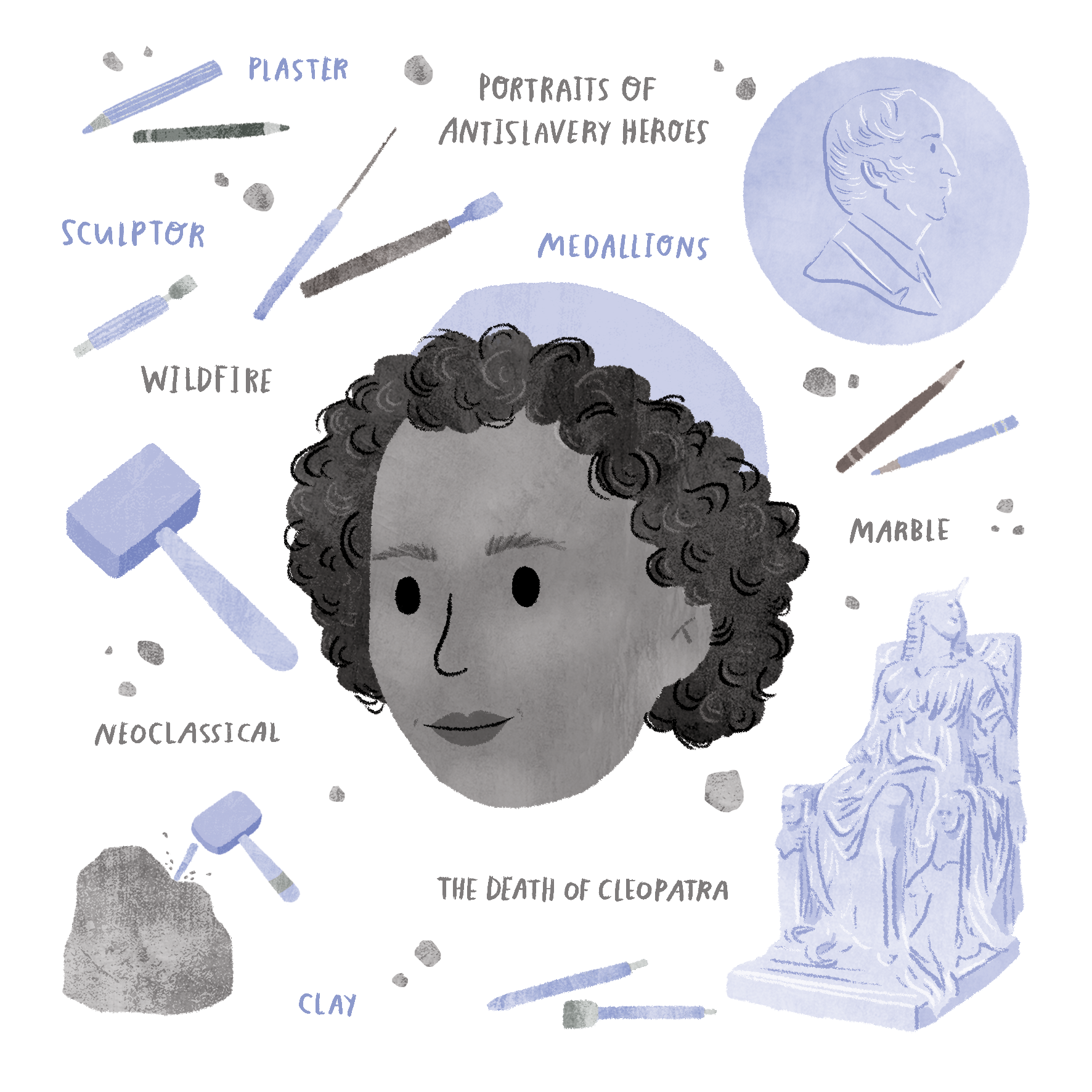For this month’s challenge, create a stylistic and intriguing artwork that uses something that others commonly think of as yucky!
If we look at the world of modern art (1860s to 1970s), we see a prolific period that produced an abundance of art styles and philosophies. Throughout history, artists have changed their approach and subject matter to evolve their style.
When thinking of evolving style, one name comes to mind: Pablo Picasso. His name is linked with significant art movements—Cubism, Symbolism and Surrealism, and he also invented collage. Picasso created work in many disciplines, including painting, sculpting, ceramics, poetry, stage design and writing. His painting traces his stylistic shift from his early works to the Blue Period to Analytical and Synthetic Cubism and so on. Each of these periods showed an evolution in his style and is easily recognized.
La Vie – 1903. Pablo Picasso
Picasso’s Blue Period artworks use essentially monochromatic shades of blue-green and blue. His subject matter is representational and easy to recognize. His analytical cubist artworks also used a limited, almost monochromatic color palette. However, his subject matter appears almost abstract due to the stylization of form. The still lifes and people in his cubist works are fractured into rudimentary shapes and overlapping planes.
Still Life with a Bottle of Rum – 1911. Pablo Picasso
Picasso is an excellent example of how artists can use stylistic choice to create intentional work in various ways; color palette and representation and abstraction are one way.
This month’s SciComm challenge has an emphasis on style and appearance! We are challenging you to take something that others commonly think of as yucky and create a visually appealing or intriguing artwork.
As science communicators and artists, we have the power to transform scary, complex, yucky, hidden, unseen or underappreciated things into intriguing or beautiful learning experiences. Parasites, viruses, mold, decay… all of these things might have hidden aspects of beauty or broader meaning. The power of visual science communication is to reveal these hidden aspects.
We are taking inspiration from the Lifeology University SciComm Program course on Style in Science Communication.
In this course, professor Massimiano Bucchi and illustrator Jordan Collver show why and how style can be a signal of quality in science communication. Learn more from Massi and Jordan about the rationale and process for creating this course here!



The Challenge
Create a stylistic and intriguing artwork that uses something that others commonly think of as yucky – microorganisms (bacteria, archaea, fungi, algae, protozoa and viruses). Consider how you can present your work to create a visually exciting and thoughtful science communication piece.
Format: Create an artwork (.png format) for your submission. You can create your work in any medium-digital art, traditional media, including photography.
Submit your artwork by sharing it on Twitter or Instagram using the hashtag #LifeologyStyle2021
Beauty in Bacteria
Lifeology community member and scientific illustrator Eliza Wolfson has more than a casual interest in microbiology. Her post-doctoral work includes how E. coli and Salmonella manipulate our cells to live on or in them. As she worked in this area, it filled her head with pretty pictures of molecular details of life and the universe. See an example of her art below:
